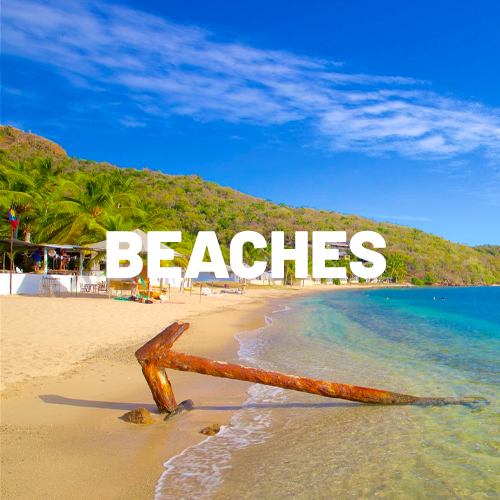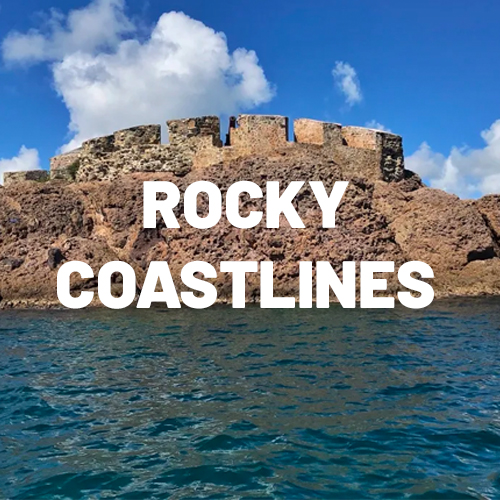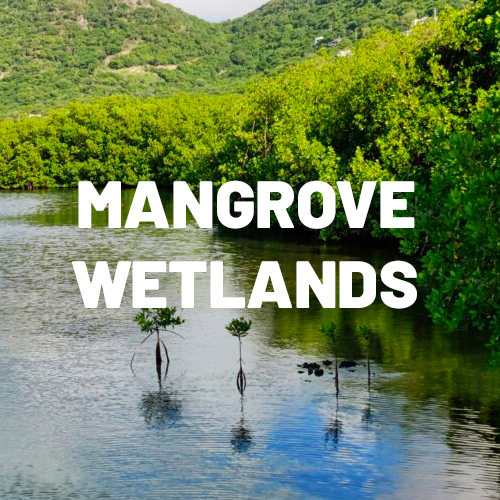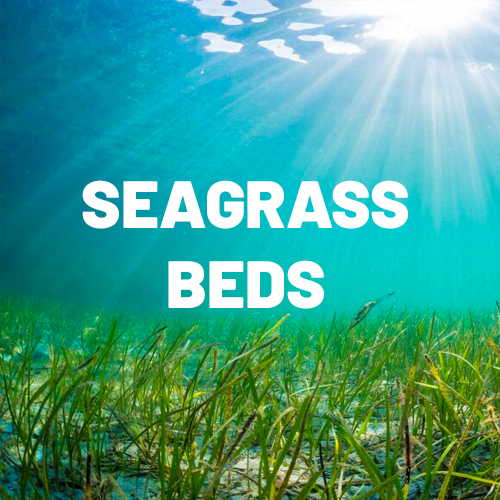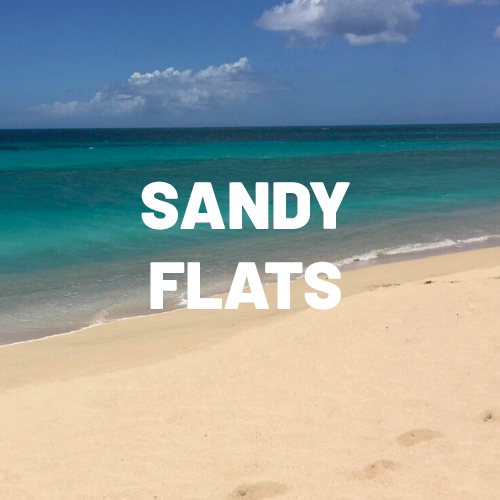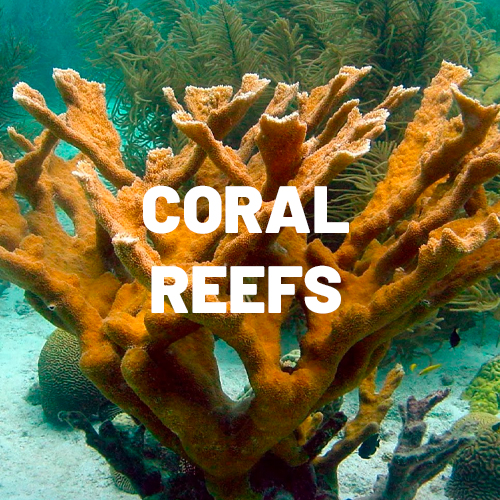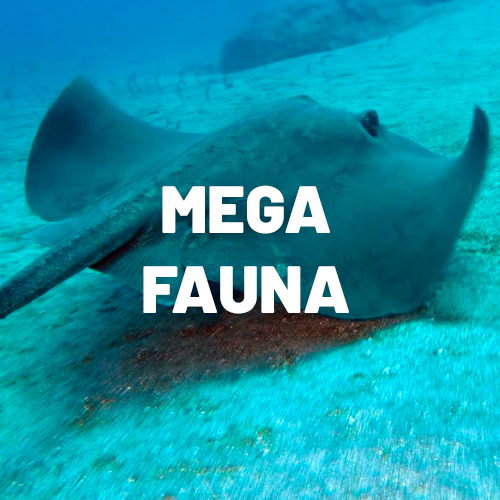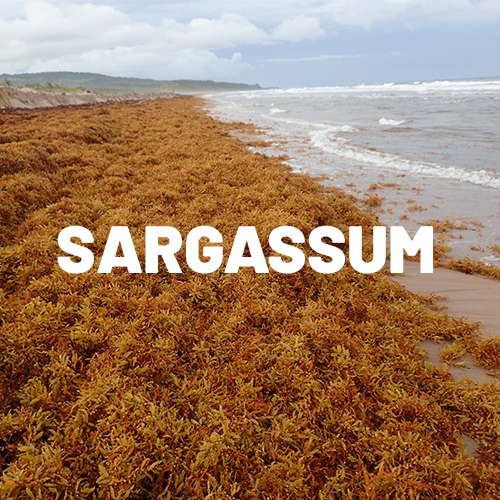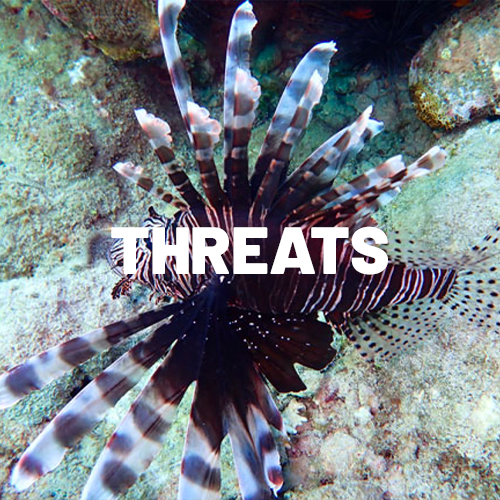Seagrass Beds
Seagrass Beds typically consist of a combination of seagrass and algae. The primary difference between the two are that while seagrass closely mirrors land plants and have shoots, roots, flowers and seeds; algae doesn’t have roots and needs a substrate to grow on, to which they secure themselves using a holdfast.
Seagrass beds provide a variety of ecosystem services, inclusive of carbon sequestration, filtration of water, support for livelihoods, provide a nursery for juvenile fish and crustaceans and habitat and feeding grounds for larger species like conch and turtles. The main flora found in seagrass beds are:
Turtle Grass (Thalassia testudinum)
Turtle grass is perhaps one of the most recognized seagrass species. It has very long flat blades and is a favorite food of the Green Sea Turtle (Chelonia mydas).
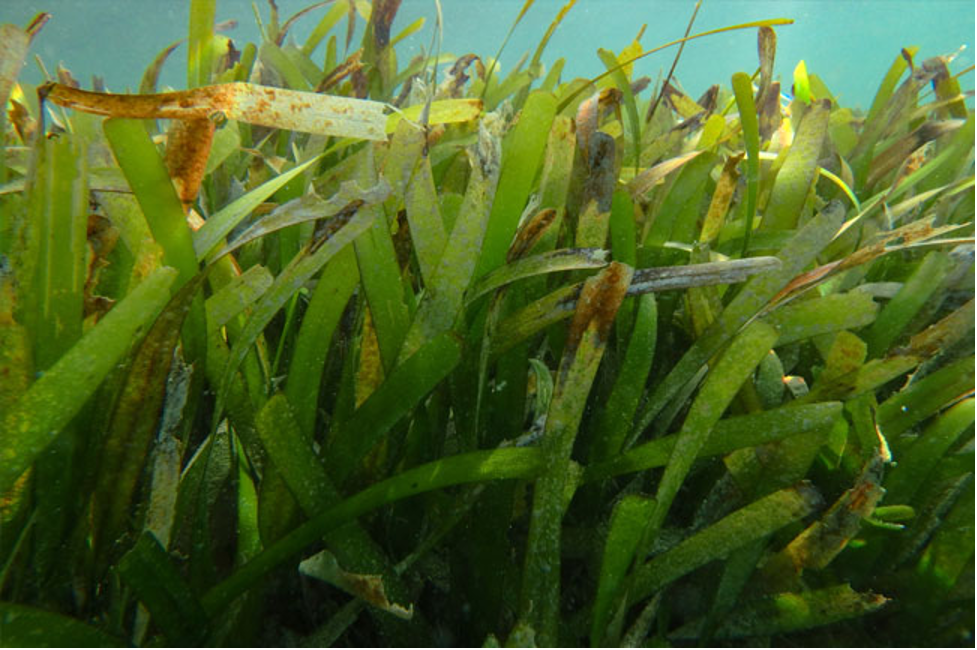
Turtle Grass (Thalassia testudinum)
Photo by Ruleo Comacho
Manatee Grass (Syringodium filiforme)
Manatee grass is the closest resemblance to straws that you will find in the seagrass beds.
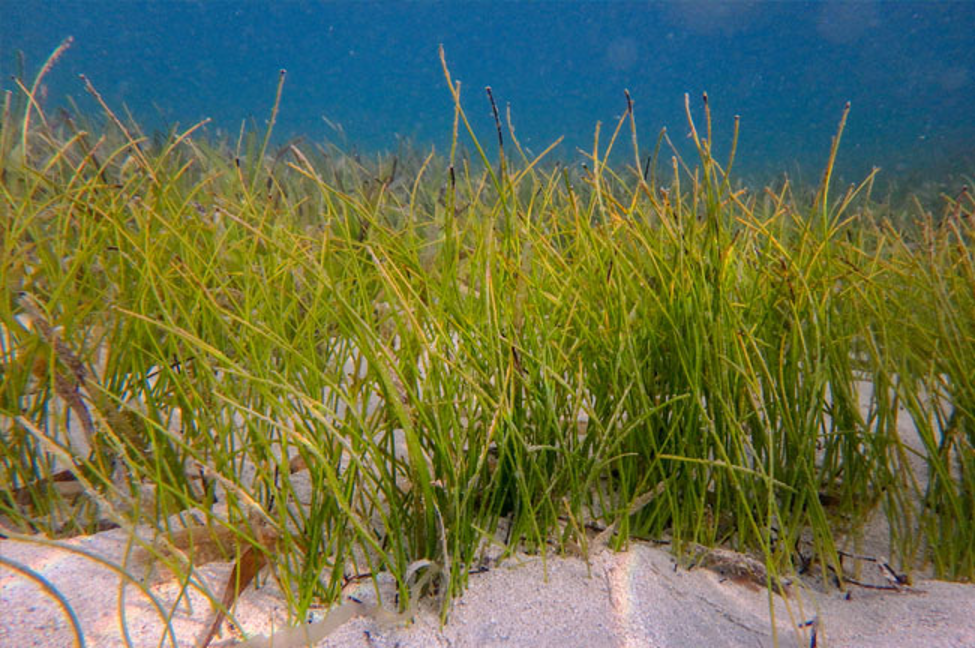
Manatee Grass (Syringodium filiforme)
Photo by Ruleo Comacho
Blade Grass (Halimeda sp.)
There are several different species of Halimeda found in our water. One of the unique aspects about this seagrass is that they produce a calcareous substance that contributes toward sand nourishment of our beaches and sandy flats.
Algae
The three major groups of algae are brown algae (Phylum Phaeophyta), green algae (Phylum Chlorophyta) and red algae (Phylum Rhodophyta). Algae are extremely fast growers and serve as a valuable food source for many organisms in the seagrass ecosystem. They can also be used as indicators of poor water quality, as a proliferation of any type of algae is likely an indication of high nutrient content.
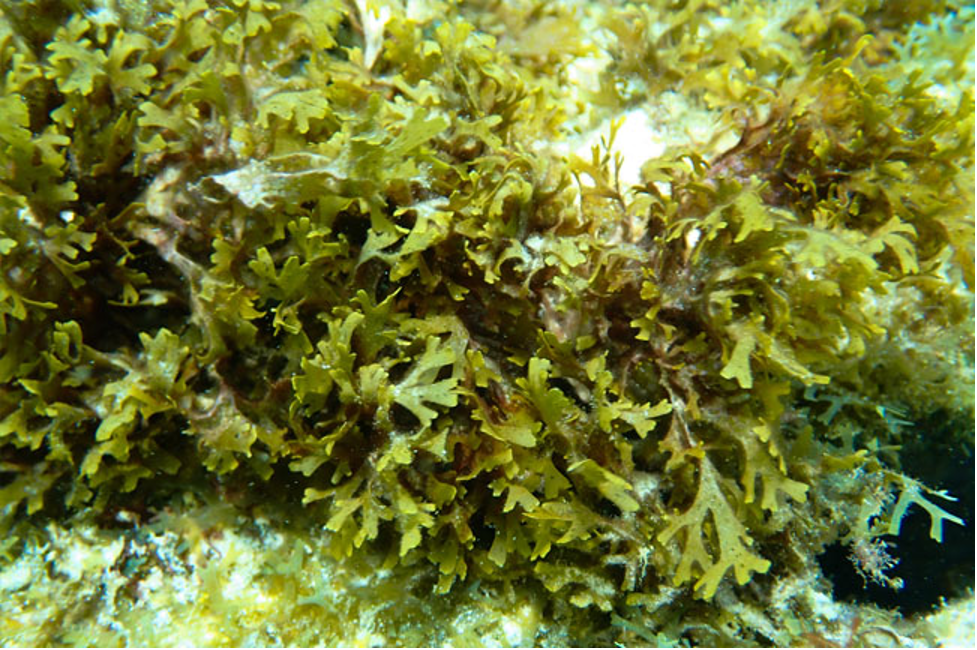
Y-Branched algae (Dictoyota sp.)
Photo by Ruleo Comacho
Seagrass beds are also home to a diverse faunal community, which uses seagrass as a primary feeding area or as habitat and nursery areas. Juvenile commercial and ecologically important fish species, such as snappers, groupers and parrotfish, are often seen swimming between the seagrass beds. Some crabs (Subphylum Crustacea), conch (like the Queen Conch: Lobatus gigas) and Sea Stars (Class Asteroidae) will spend the majority of their lives in seagrass beds, while Green Turtles can be seen feeding in them.
Fauna found on Seagrass beds include:
- Urchins
- Sea Stars
- Queen Conch
- Sea Cucumber
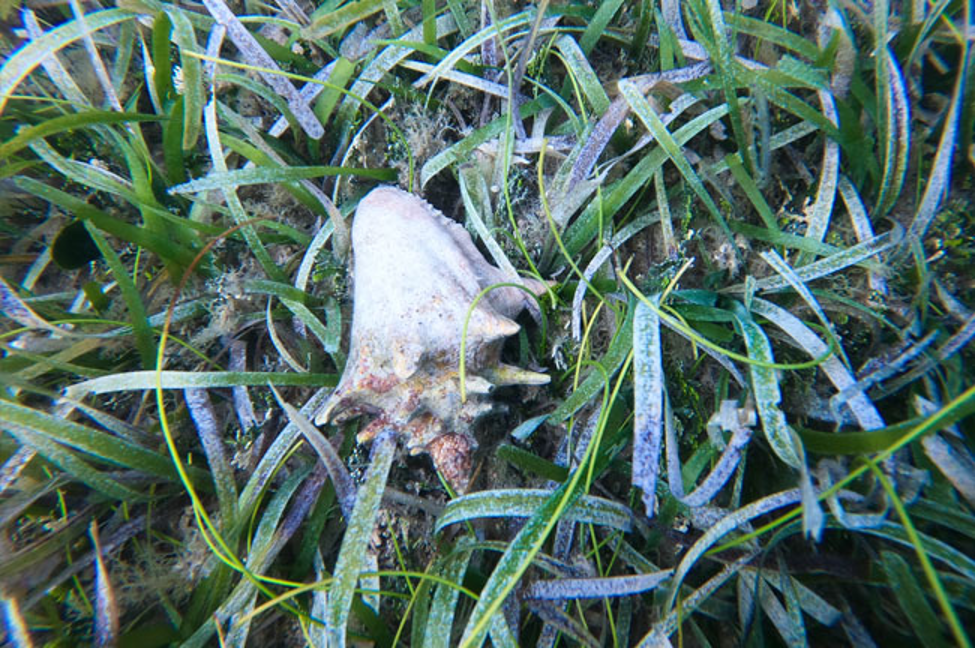
A juvenile Queen Conch (Aliger gigas).
Photo by Ruleo Com
ADDRESS
English Harbour, Antigua
OPENING HOURS
Monday – Friday
08:00 AM – 05:00 PM
Saturday
08:00 AM – 05:00 PM

